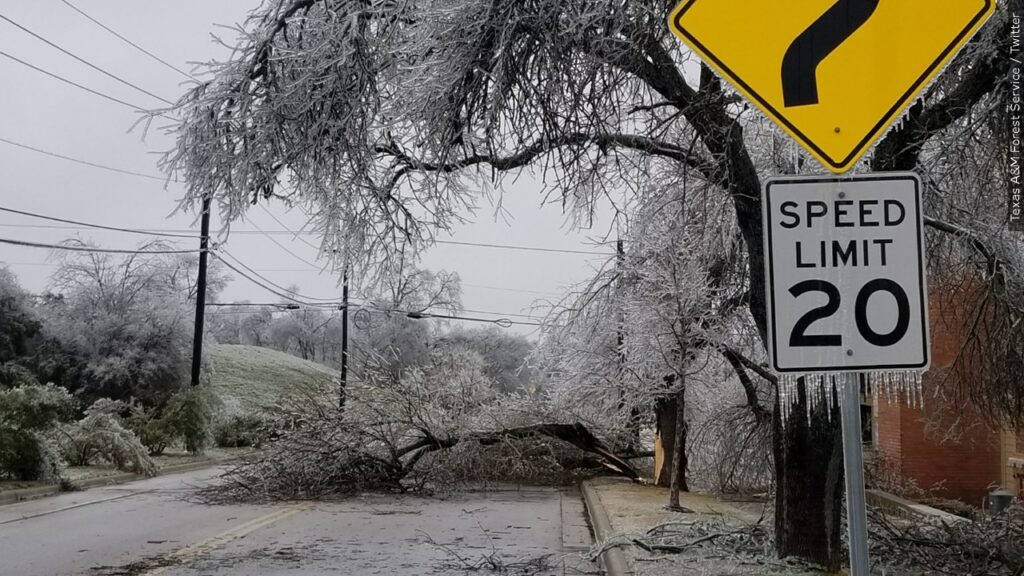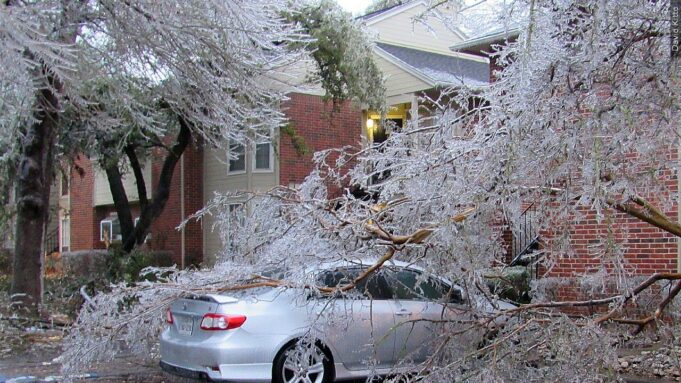AUSTIN, Texas—Thousands of frustrated Texans shivered in homes without power for a second day Feb. 2, most of them around booming Austin and fading hopes of a quick fix, stirred grim memories of a deadly 2021 blackout after an icy winter storm across the southern U.S.
The freeze has been blamed for at least 10 traffic deaths on slick roads in Texas, Arkansas and Oklahoma. And even as Texas finally began thawing Feb. 2, a new artic front from Canada was headed toward the northern U.S. and threatening New England with potentially the coldest weather in decades, wind chills could dive below minus 50.
New Englanders are used to cold temperatures, but a combination of extreme cold accompanied by powerful winds is downright dangerous, and enough to send even bundled-up skiers scampering indoors.
It’s that potentially deadly combination that sparked worries as weather forecasters talked about “once-in-a-generation” wind chills in parts of New England.
New England’s temperature swing is being caused by two things: The blast of Arctic air has reached the region just as a rapid cyclogenesis is developing over Labrador and Newfoundland, churning up powerful winds, said meteorologist Donald Dumont at the National Weather Service in Gray, Maine.
A cyclogenesis refers to an intensification of a cyclone or low-pressure storm system. Those winds mean cold air dipping to nearly 30 below could feel much colder, with wind chills of minus 50 (minus 45 Celsius) in some spots of the Northeast.“Those things are leading to this extreme wind chill weather pattern that’s going to be impacting us,” Mr. Dumont said.The reality is, this sort of extreme cold doesn’t happen all that often, even in the Northeast.

In Portland, Maine, the wind chill was expected to dip to 40 below Fahrenheit (which is also minus 40 Celsius). It’ll be the coldest since at least 2016 and could be the coldest since 1981, so it’s possible the wind chills will be the coldest in more than four decades, Mr. Dumont said.
The extremes increase with elevation. On Feb. 3, winds were topping 100 mph and wind chills were forecast to possibly reach minus 100 atop New Hampshire’s Mount Washington, where a handful of weather observers are stationed.
Is it really dangerous?
Yes, it is. And, Mr. Dumont added, “it’s painful.” The wind chills forecast could cause frostbite on exposed skin in just 10 minutes. Even if bundled up, the extreme cold can be dangerous for someone who’s outside for an extended period.
That’s why people are encouraged to remain indoors. If people have to go outside, then they should dress like their lives depend on it.
A deadly storm system lashed a large swath of the southern U.S. with bands of sleet and snow for a third day on Feb. 1, grounding an additional 2,300 flights, leaving hundreds of thousands without power, forcing school closures and making already treacherous driving conditions worse.
Watches and warnings about wintry conditions were issued for an area stretching West Texas’ border with Mexico through Oklahoma, Arkansas and Louisiana, and into western Tennessee and northern Mississippi. Several rounds of mixed precipitation, including freezing rain and sleet, were in store for many areas throughout the day, meaning some places could get hit multiple times, forecasters said.
“It actually looks like it’s going to be getting worse again across Texas, it is already a pretty big area of freezing rain across Western and Southwestern Texas,” said Bob Oravec, a lead National Weather Service forecaster based in Camp Springs, Maryland. Because of the storm, the Detroit Pistons were unable to fly home following their game Jan. 30 against the Dallas Mavericks, and the NBA postponed the Pistons’ Feb. 1 home game against the Washington Wizards.
Many schools throughout Arkansas have announced they would be closed on Feb. 2. School systems in Dallas; Austin, Texas; and Memphis, Tennessee, also canceled classes for Feb. 2. In Texas, more than 350,000 customers were without power Feb. 1 as trees—heavy with ice—buckled onto power lines, according to PowerOutage, a website that tracks utility reports.
More than half of those outages were in Austin, where the city’s utility warned residents who had been without electricity for 10 hours or longer that lights and heat may not come back on until Feb. 2. Overnight low temperatures were expected to fall to 33 degrees in Austin, with more chances for freezing rain, according to the National Weather Service. Austin Energy asked customers to prepare emergency plans and relocate before dusk, if needed.
Pablo Vegas, who heads the Electric Reliability Council of Texas, vowed that the state’s electrical grid and natural gas supply would be reliable and that there wouldn’t be a repeat of the February 2021 blackouts, when the grid was on the brink of total failure.
As the ice and sleet enveloped Memphis, Tennessee, Memphis-Shelby County Schools announced it would cancel classes Feb. 1 due to freezing rain and hazardous road conditions. The school system serves about 100,000 students. The National Civil Rights Museum in Memphis also closed due to the weather.
In Arkansas, Republican Gov. Sarah Huckabee Sanders declared a state of emergency Jan. 31 because of icy conditions. Her declaration cited the “likelihood of numerous downed power lines” and said road conditions have created a backlog of deliveries by commercial drivers.
(Compiled from Associated Press reports)













